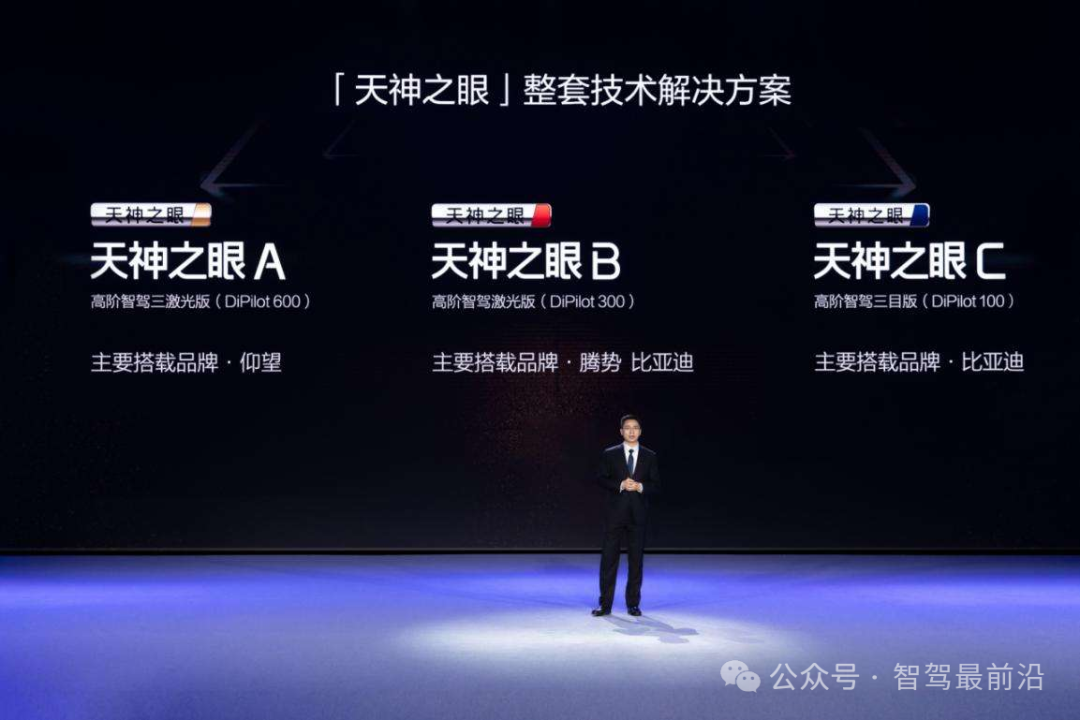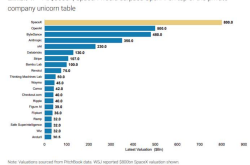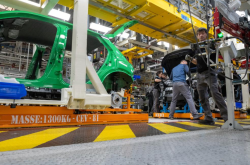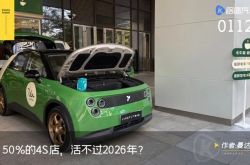What is the Computing Power Pivotal in Autonomous Driving?
![]() 07/18 2025
07/18 2025
![]() 481
481
In discussions of intelligent driving systems, a frequently mentioned term is "computing power," as exemplified in BYD's "DiPilot" intelligent driving system. Depending on the specific scenario, the required computing power varies:

The DiPilot A version, equipped with 3 LiDARs, 11 cameras, and 5 millimeter-wave radars, utilizes dual NVIDIA Orin-X chips with a combined computing power of 508 TOPS. This high-end configuration allows it to excel in unmapped urban navigation and extreme off-road optimization, making it suitable for the high-end market.
The DiPilot B (DiPilot 300) features 1 LiDAR, 12 cameras, and 5 millimeter-wave radars, powered by a single Orin-X chip with 254 TOPS of computing power. It caters to the mid-to-high-end market, suitable for functions like urban highway NOA and automatic parking.
The DiPilot C (DiPilot 100), without the use of LiDAR, relies on an 8-megapixel dual-wide-angle and telephoto front-view camera setup, paired with the Horizon Robotics J6M chip offering 84-128 TOPS of computing power. It targets the affordable market, providing features such as highway NOA and valet parking.
Despite all being part of the DiPilot series, their varying hardware configurations lead to different application scenarios and levels of computing power. The higher the level of intelligent driving, the greater the computing power required. So, what exactly is "computing power," and how does it influence the development of autonomous driving?

What is "Computing Power"?
The world faced by autonomous vehicles is fraught with complex and unpredictable variables. From in-vehicle cameras, radars, LiDARs, to ultrasonic sensors, all sensing devices continuously gather data on the road, pedestrians, traffic signs, and environmental changes. The sheer volume and diversity of data generated require preprocessing, fusion, and analysis within milliseconds to provide accurate information for the vehicle's decision-making system. At the core of this high-speed operation lies computing power.
In simple terms, computing power refers to the amount of data processing and algorithmic operations a computing platform can execute in a unit of time. TOPS (Tera Operations Per Second), as a key metric for measuring chip computing power, directly indicates how many basic operations a system can perform per second. For systems like autonomous driving, which demand stringent real-time performance and safety, computing power determines the speed of data processing, model inference efficiency, and the accuracy and timeliness of final decisions.
Computing power is not merely an abstract performance figure but a tangible manifestation reflected in hardware architecture design. In the realm of autonomous driving, leading manufacturers have heavily invested in developing dedicated chips for in-vehicle applications. These chips typically employ a heterogeneous computing architecture, integrating CPUs, GPUs, specially designed NPUs, and dedicated AI accelerators on a single platform. Each module serves a distinct purpose, with the CPU handling overall scheduling, control logic, and general computing tasks, while the GPU and NPU focus on parallel computing and matrix operations, especially critical in processing deep learning algorithms. Taking NVIDIA's Drive series as an example, its platform boasts not only high TOPS computing power but also achieves rapid and efficient data processing through the integration of advanced parallel processing units and low-latency memory architectures. It is this continuous advancement in computing hardware that enables autonomous vehicles to swiftly fuse and analyze data from diverse sensors, thereby promptly identifying potential hazards or obstacles in complex road conditions.

What is the Significance of "Computing Power"?
To understand the significance of computing power, we must first clarify the computing tasks faced by autonomous driving. The primary task is perception, which involves the real-time acquisition and understanding of the external environment. The autonomous driving system must process high-resolution video streams, point cloud data, and radar signals. After preliminary processing, this data is fed into deep neural network models for object detection, tracking, and classification. Deep learning models, represented by CNNs, can extract essential information from massive datasets but also impose significant demands on computing power. To achieve millisecond-level response times, the system must complete image preprocessing, feature extraction, and model inference within a fraction of a second, all relying on the robust parallel computing capabilities of the chip. A higher TOPS index allows the processor to complete more computing tasks in the same timeframe, thereby reducing overall system latency and ensuring the vehicle can respond swiftly even at high speeds.
Computing power is equally vital for path planning and decision-making control. Autonomous driving necessitates not only accurate environmental perception but also real-time formulation of driving strategies to ensure safe and efficient operation. When the system detects unexpected situations on the road, such as sudden appearances of pedestrians or vehicles, its decision-making algorithm must comprehensively consider the vehicle's state, road conditions, and potential risk factors to generate an avoidance or deceleration plan swiftly. This process involves extensive mathematical computations and logical judgments, posing challenges to the real-time processing capabilities of the computing platform. Only with high TOPS computing power can the in-vehicle system ensure rapid completion of various algorithmic operations and generation of corresponding operational instructions in response to unexpected situations.
To stabilize computing power, chip manufacturers must focus not only on raw computing speed but also on balancing power consumption, thermal management, and system stability. The in-vehicle environment imposes stringent requirements on power consumption and heat dissipation. Excessive power consumption not only leads to severe system heating but also compromises computing stability. Therefore, modern autonomous driving chips typically adopt advanced manufacturing processes and low-power design technologies, aiming to deliver high TOPS computing power while maintaining reasonable energy consumption performance. For instance, some new chips employ dynamic voltage scaling technology to adjust power consumption output in real-time based on computational load, enabling a seamless integration of high-intensity computing and low-power operation. This collaborative optimization of hardware and software ensures that the autonomous driving system can maintain efficient computing in complex environments while effectively extending the lifespan of the entire vehicle's electronic system and mitigating concerns about heat dissipation and energy consumption.
From the perspective of the autonomous driving system's overall architecture, computing power is crucial for multi-modal data fusion processing. Autonomous driving vehicles often carry multiple sensors simultaneously, each with its unique method of information collection and data characteristics. A single sensor often fails to provide sufficient information to fully comprehend the driving environment. Multi-sensor data fusion compensates for the limitations of a single data source, enhancing the reliability and accuracy of environmental perception. The parallel processing and real-time fusion of multi-modal data impose higher demands on the computing platform. The challenge lies in how to synchronize and process data from diverse sensors within milliseconds and construct an accurate environmental model through deep learning algorithms. High-TOPS computing power platforms offer significant advantages in this scenario. They not only provide formidable parallel computing capabilities but also ensure high-speed and seamless exchange and fusion of various data types through optimized data transmission and memory management, thereby maintaining stable and precise judgment capabilities in complex dynamic environments.

Summary
With the relentless advancement of autonomous driving technology, the complexity of algorithms is continually increasing. In recent years, new generations of deep learning models, such as the Transformer structure, have emerged in fields like natural language processing and computer vision. While these models excel in accuracy and robustness, their substantial computational requirements have drastically increased operational demands during the inference phase. In autonomous driving scenarios, every millisecond of delay can pose severe safety risks. Therefore, effectively compressing computing resources and optimizing operational processes while ensuring model accuracy has become a crucial direction for current technological research and development. To this end, techniques such as model quantization, pruning, and knowledge distillation can be explored, aiming to maximize the performance advantages of high-TOPS chips while minimizing computational complexity.
Computing power is not merely a number quantifying hardware performance but a manifestation of comprehensive engineering capabilities and system synergy. Every breakthrough in chip technology and the birth of each algorithm optimization method drives autonomous driving technology towards safer, smarter, and more efficient directions. In the future, when in-vehicle chips, sensor technology, communication networks, and edge computing are seamlessly integrated, we will witness a new era of truly autonomous driving and intelligent transportation, all founded on the ever-increasing trillion operations per second computing power—TOPS.
-- END --






